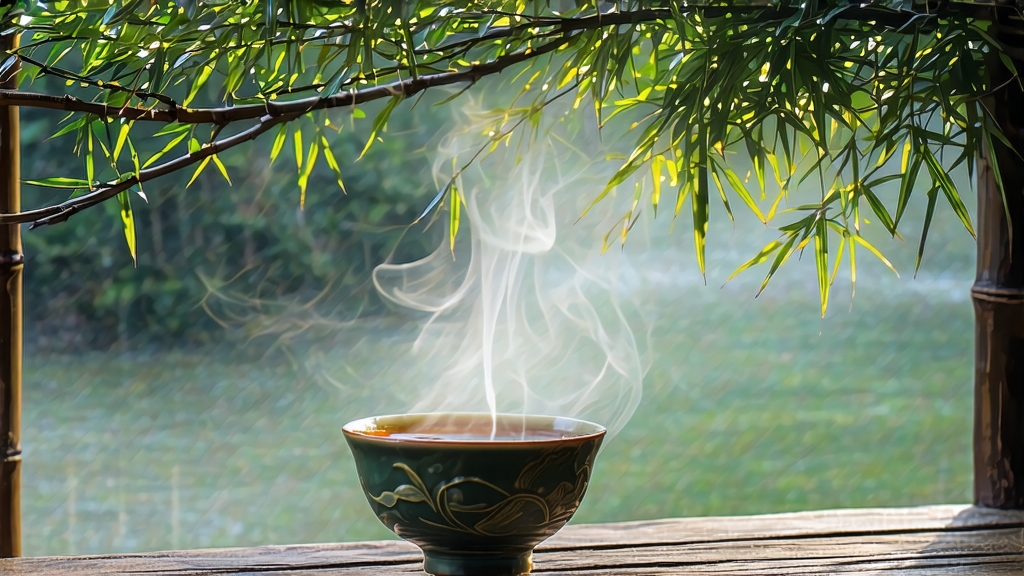
Tucked away in the humid, karst-pocked southwest of China, the small district of Liu Bao in Wuzhou, Guangxi, gave its name to a tea that once rode the same mountain trails as spices, silk and opium. To most Western drinkers “dark tea” begins and ends with Shou Pu-erh, yet Liu Bao—older than many Pu-erh recipes—carries a mellower, more camphorous soul that deserves its own passport. This article invites you to travel by cup, not caravan, into the history, craft and quiet ceremony of Liu Bao Hei Cha.
-
Historical footprints
Song-era tax records already list “Wuzhou slice tea” paid in tribute; by the Qing dynasty the tea was compressed into 37 kg bamboo baskets, strapped to horses, and marched 1,200 km to the port of Beihai where clipper ships carried it to Hong Kong, Macau, then Malaya and Indonesia. In the tin mines of Kuala Lumpur coolies drank it to dissipate “damp miasma”; in the kopitiams of Penang it was sweetened with condensed milk and renamed “Kopi Th’ng.” The overseas demand was so steady that Liu Bao factories kept producing through wars and revolutions, yet the tea almost vanished from domestic Chinese shelves after 1949 when Pu-erh monopolized the dark-tea spotlight. Only in 2005 did Guangxi collectors rediscover 1950s basket-aged lots, and prices have doubled every few years since. -
Terroir and leaf
Liu Bao lies on the Tropic of Cancer; morning river fog and afternoon convection rain create a giant natural humidor. The indigenous cultivar—medium leaf, long petiole, purple underside—thrives in red lateritic soil so porous that roots descend three metres, sipping mineral-rich groundwater. Locals insist the tea’s signature “betel-nut” note (a cool, eucalyptus-like camphor with a sweet finish) is half genetics, half geology. Spring buds are plucked with one leaf open, the same standard once demanded by Penang merchants who paid in silver dollars weighed on the spot. -
Craft: from sha-qing to water-wetting
Unlike Yunnan’s sun-dried rough tea, Liu Bao is pile-fermented in the factory. Fresh leaves are pan-fired at 280 °C for eight minutes to kill green enzymes, then rolled until the sap froths. The twist is “water-wetting” (shui qin): the semi-dry leaf is lightly misted, heaped 70 cm deep on bamboo mats, and left to heat itself to 55 °C over 4–6 hours. A master called the “dui zi tou” inserts a forearm into the pile; when the skin feels sticky-sweet like rice syrup, the heap is turned. This mini-wet piling lasts only 24–36 hours—far shorter than Pu-erh’s 40–60 days—yielding a lighter oxidation that preserves floral high notes. Finally the leaf is steamed, pressed into 500 g bricks or loose-filled into plaited bamboo baskets lined with banana leaf, and moved to an above-ground aging room kept at 28 °C and 75 % RH. There it will sleep for at least three years before sale, though connoisseurs chase the 15- to 30-year mark when camphor transmutes into antique sandalwood. -
The bamboo basket: breathing archive
Basket aging is Liu Bao’s trademark. Thin bamboo slats allow micro-airflow; banana leaf buffers humidity spikes. Every six months workers rotate the baskets, so the tea ages evenly. Over decades the leaf absorbs bamboo lactones, acquiring a faint green-bamboo freshness that balances the deep earthiness. Opening a 1980s basket releases a perfume that Chinese drinkers liken to “old qin wood after rain”—a scent impossible to replicate in sealed Pu-erh tongs. -
Variations within the niche
- Traditional loose basket (san cha): uneven leaf size, maximum airflow, fastest aging.
- Brick (zhuan cha): denser, slower, develops cocoa richness after fifteen years.
- Orange-stuffed Liu Bao: a modern gimmick where hollowed mandarins are filled with Liu Bao, then sun-dried; the citrus oil speeds microbial activity